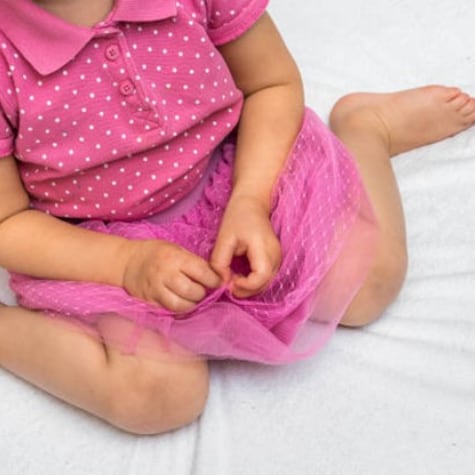Developmental Dysplasia of the Hip
Developmental dysplasia of the hip (DDH), also commonly known as hip dysplasia, can be present at birth or develop as your child grows. It describes a wide range of problems, such as a misshapen ball or socket or a loose hip joint. DDH occurs in 1 in every 1,000 births, and it can run in families or may be caused by something in the baby’s environment during pregnancy. It may also occur as a result of a child’s response to the mother’s hormones during pregnancy. In addition, hip dysplasia is more common in girls and more likely to occur in the left hip.
There are several risk factors linked to hip dysplasia, including:
- Family history of hip dysplasia
- Very flexible ligaments
- Position of the baby in the uterus, such as breech position
- Firstborn babies (because the uterus is small)
- Limited space in the uterus
- Orthopedic problems that include metatarsus adductus, clubfoot deformity, congenital conditions and other syndromes
Support on Facebook
With hip dysplasia, the hip socket (acetabulum) may be shallow, which allows the ball (femoral head) of the leg bone to slip in and out of the hip socket. The ball may move partially or completely out of the socket. Symptoms can vary by age of the child.
Signs of hip dysplasia in babies, infants and toddlers may include:
- One leg may appear shorter than the other.
- The rotation of one hip may be different.
- Folds in the skin of the thigh or buttocks may be uneven.
- Space between the legs may look wider than normal.
- The hip may shift, click or clunk during certain movements, such as diaper changes.
Signs of hip dysplasia in children, teens and young adults may include:
- Hip pain
- Clicking sound in the hip joint
- Catching feeling in the hip joint
- Too much or too little movement of the hip
- One leg being shorter than the other

W Sitting and Hip Pain in Kids
At Children’s, we treat a wide range of hip conditions in kids. Tim Schrader, MD, Medical Director of the Hip Program at Children’s, weighs in on W sitting, the importance of stretching, and shares a few tips for keeping young hips healthy at any stage of development.
learn moreOur orthopedic team at Children’s takes a specialized approach to diagnosing hip dysplasia complications in children. This may include:
- Complete medical history and physical examination, in which your doctor will do a physical exam of your child at birth and during infancy to check for DDH and other hip problems. Signs may not show until later in life.
- X-ray
- MRI
- CT scan
- Ultrasound (children under 6 months old)
The goal of treating a hip condition like DDH in a child is to put the ball back into the hip socket so the hip can develop normally. Some hips do not continue to develop normally and need more treatment.
Treatment for your child is based on:
- Age
- Extent of hip dysplasia
- Medical history
- Tolerance to medicine, procedures and therapies
Treatment options may include:
- Pavlik harness: A tool for babies up to 6 months old, this harness keeps the hip in the right place while allowing your child’s legs to move and is usually worn for at least six weeks. It’s important for a doctor to monitor the hips as your child grows. The hips may not fully develop, requiring further treatment.
- Hip abduction brace: A hard, plastic brace with foam padding that holds the hips more firmly than a Pavlik harness, this brace is normally worn for at least three months.
- Surgery: This option allows a doctor to manually put your child’s hip in place. If the other methods are not successful, or if hip dysplasia is diagnosed after 6 months old, surgery and casting may be needed.
- A closed reduction surgery is sometimes combined with arthrogram and adductor tenotomy procedures, which are used to help assess the reduction and increase hip stability and flexibility. If the surgery is successful, a spica cast is used to hold the hip in place.
- Periacetabular osteotomy (PAO): Children with hip dysplasia who have reached or have almost reached their maximum skeletal growth might need a PAO surgery to reduce joint stress and improve hip function. This procedure allows the surgeon to make cuts around the hip socket to move it back into a more normal position. A PAO surgery can also help delay or eliminate the need for total hip replacement later in life.
- Physical therapy: Participating in physical therapy allows your child to perform exercises and stretches with a specialist to help make the muscles around the hip stronger and help teach your child how to walk again.

Quinn’s journey with hip dysplasia and a spica cast
Quinn was diagnosed with developmental dysplasia of the hip (DDH), also known as hip dysplasia. Our team of specialists helped correct her hips through surgery, casting and bracing.
Read Her StoryContact Us 404-255-1933

